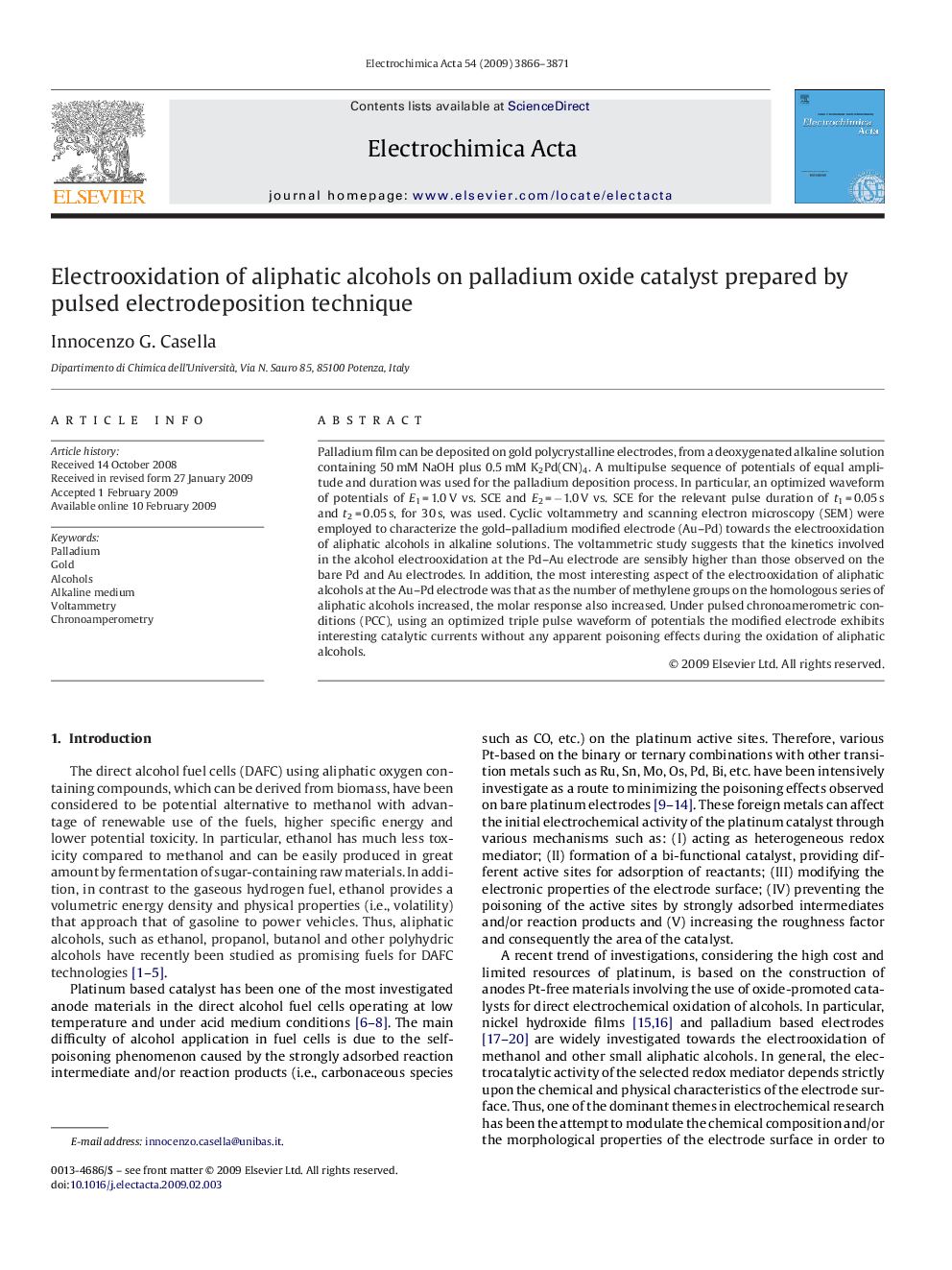| Article ID | Journal | Published Year | Pages | File Type |
|---|---|---|---|---|
| 193810 | Electrochimica Acta | 2009 | 6 Pages |
Palladium film can be deposited on gold polycrystalline electrodes, from a deoxygenated alkaline solution containing 50 mM NaOH plus 0.5 mM K2Pd(CN)4. A multipulse sequence of potentials of equal amplitude and duration was used for the palladium deposition process. In particular, an optimized waveform of potentials of E1 = 1.0 V vs. SCE and E2 = −1.0 V vs. SCE for the relevant pulse duration of t1 = 0.05 s and t2 = 0.05 s, for 30 s, was used. Cyclic voltammetry and scanning electron microscopy (SEM) were employed to characterize the gold–palladium modified electrode (Au–Pd) towards the electrooxidation of aliphatic alcohols in alkaline solutions. The voltammetric study suggests that the kinetics involved in the alcohol electrooxidation at the Pd–Au electrode are sensibly higher than those observed on the bare Pd and Au electrodes. In addition, the most interesting aspect of the electrooxidation of aliphatic alcohols at the Au–Pd electrode was that as the number of methylene groups on the homologous series of aliphatic alcohols increased, the molar response also increased. Under pulsed chronoamerometric conditions (PCC), using an optimized triple pulse waveform of potentials the modified electrode exhibits interesting catalytic currents without any apparent poisoning effects during the oxidation of aliphatic alcohols.
